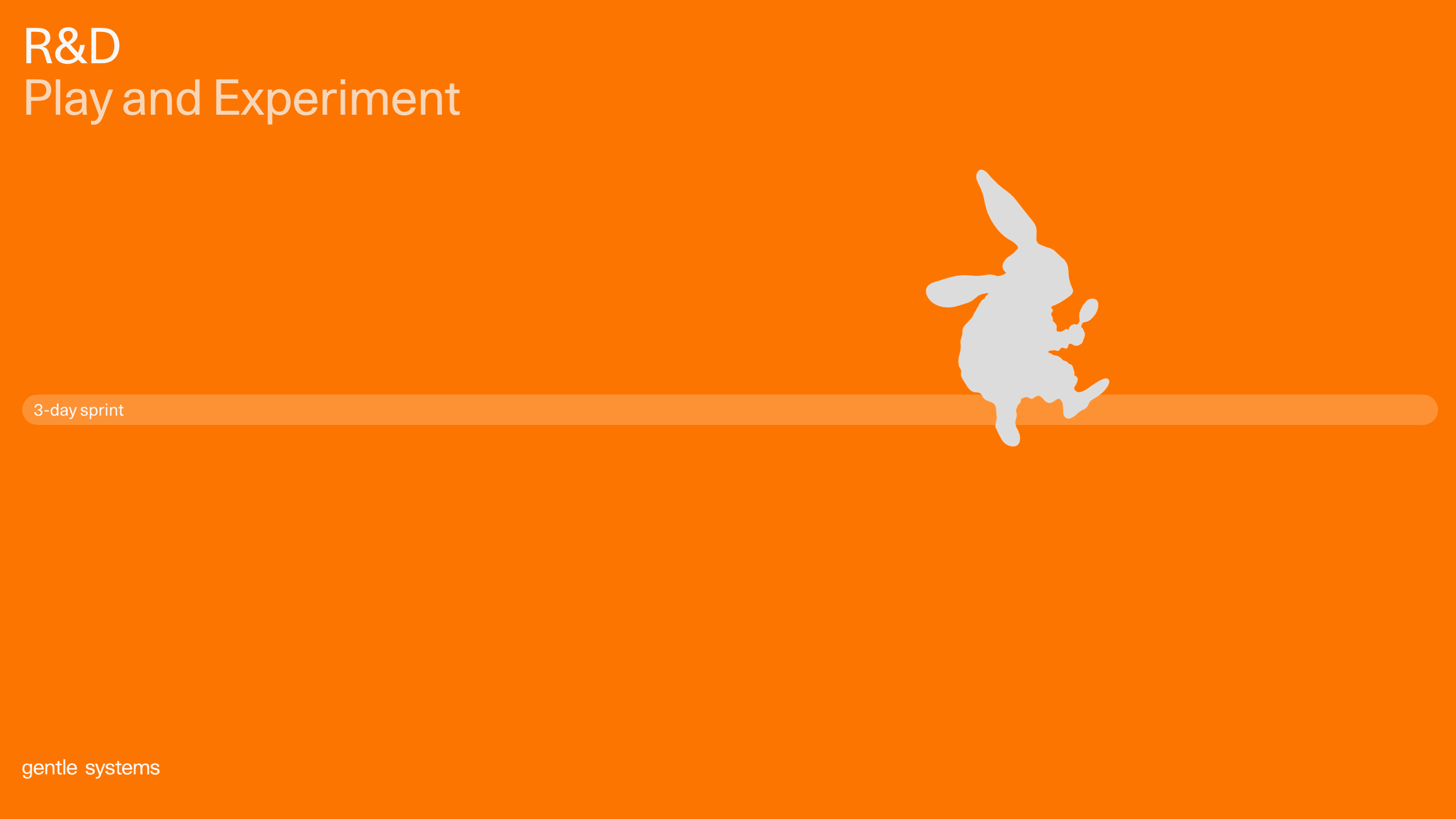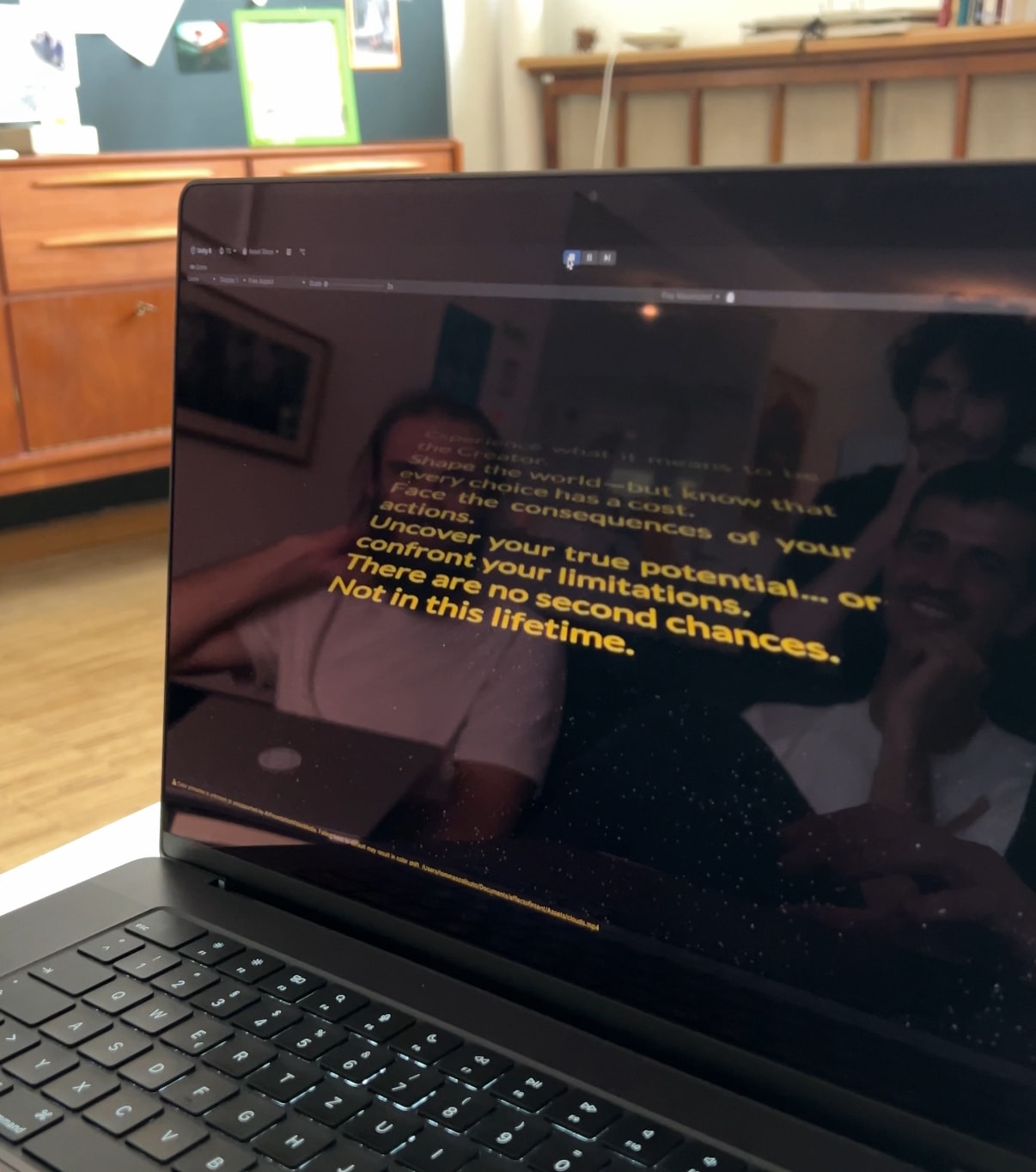Summer Play
3-day Sprint, Summer 2025
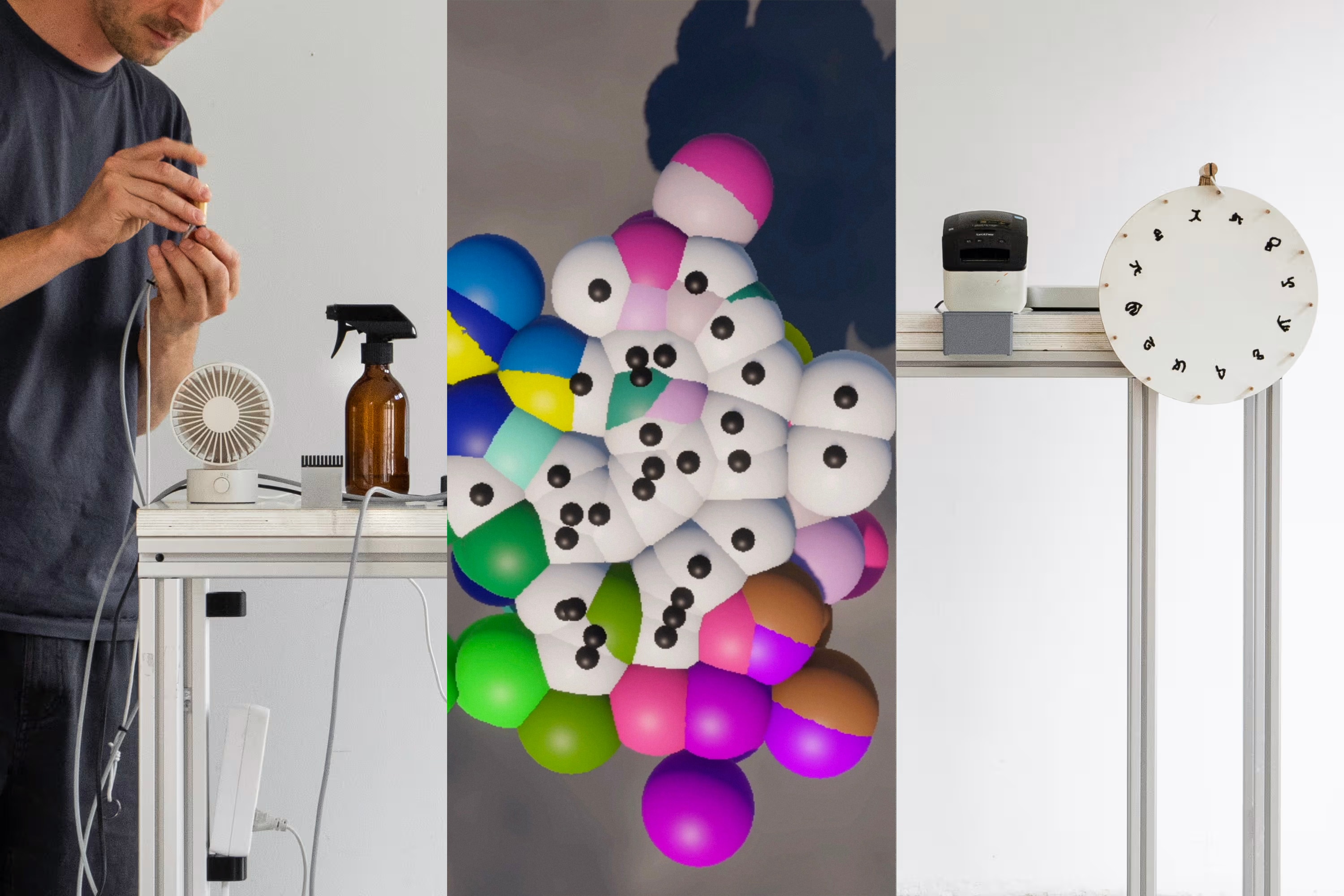
Play and experimentation are essential to any creative or learning process. They allow for discovery without pressure, for failure without consequence. Bypassing fixed outcomes by following intuition, opening paths that structured thinking might have cordoned off.
This summer, we ran a 3-day sprint focused entirely on play and experimentation. Without fixed briefs or expected outcomes, the sprint was an invitation to test, try, fail and pivot. Not strictly an escape from work, but work with lighter hands.
With a workshop and garden at our disposal, and the mixed blessing of being able to use any stray tech or materials we might find in our studio during the summer months, we found ourselves sketching, building, coding, philosophising and learning. It sharpened our instincts, challenged our resourcefulness, surfaced unexpected directions, and reminded us that play is not a whimsy, but an invaluable part of humane tech development.
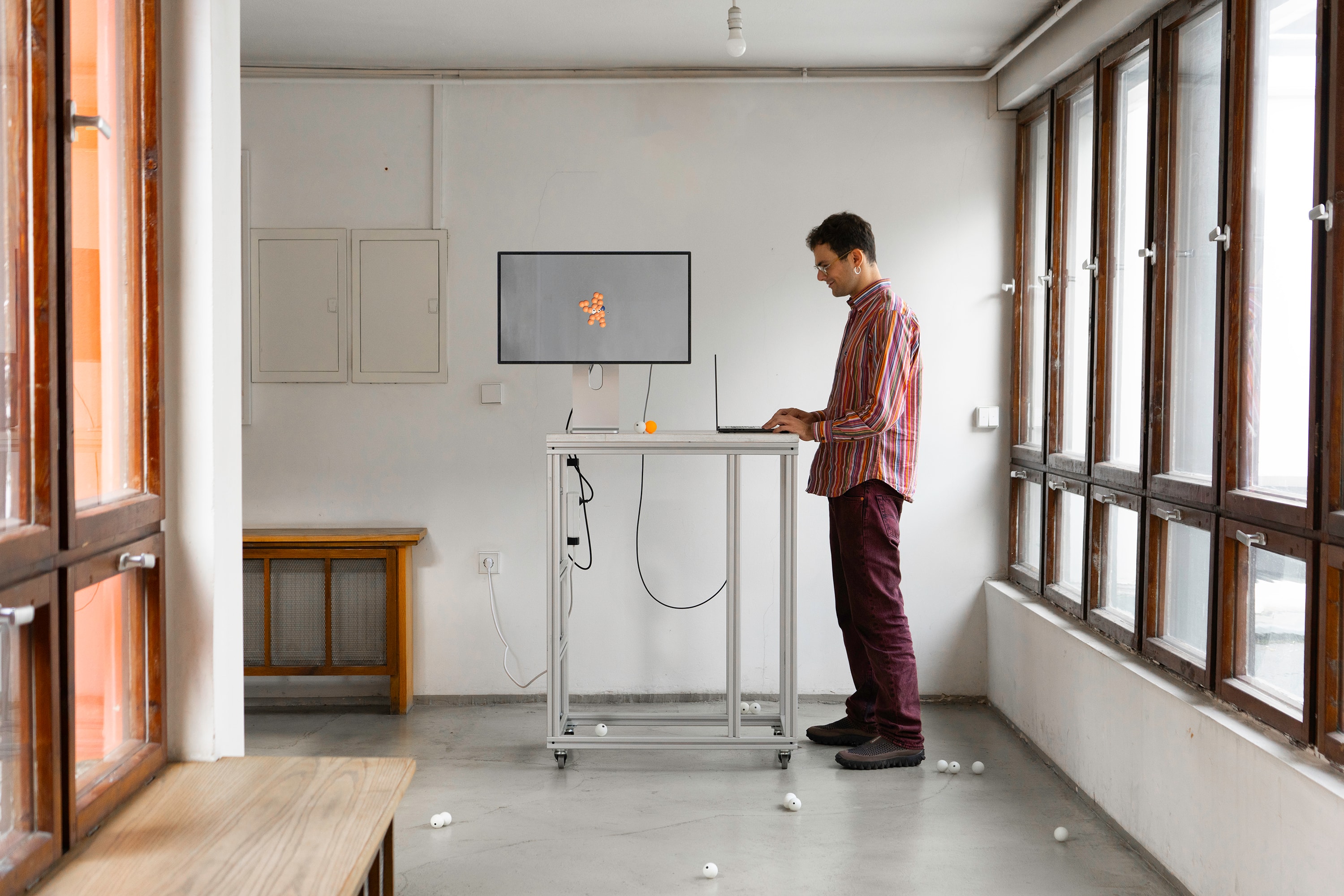
Matvey + Tommaso
A game of sorts
Matvey and Tommaso’s game was designed to let users explore evolution by tweaking a system’s initial conditions and observing the results, with bated breath. Inspired by genetic algorithms, it aimed to give users a sense of control—like adjusting mutations or body parts—and seeing how those changes affect performance. You start with a mysterious creature, modify it, and then watch it try to climb out of a rocky crater. It usually fails at first, and through trial and error, you learn how to improve it by reshaping or adding elements. It was part Darwinian, part god-like—giving power, but also unexpected outcomes.
Software
Unity
Adobe After Effects
Genetic Algorithms
Watch the experiment
00:00
00:00
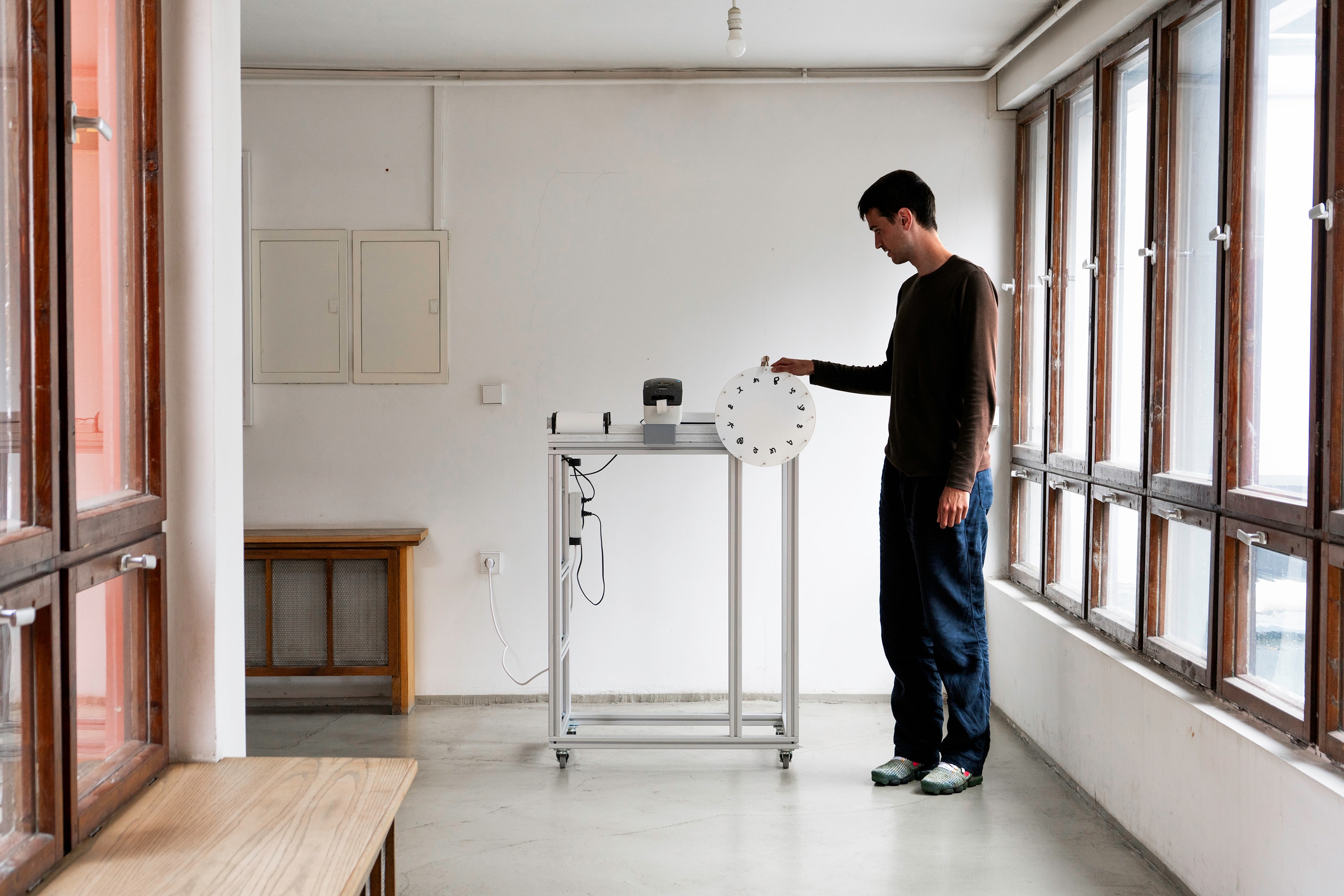
Ingur + Andrea
Spin the brief
For Ingur and Andrea, the sprint was about bringing sketching back into the design process as a way of thinking. They built an analog, screen-less station, emblazoned with cryptic symbols, that gives users random prompts via a “wheel of fortune” connected to a generative engine. When the wheel stops, a small, yet amusingly elaborate, brief is printed on a sticker, which users place on a continuous roll of paper to sketch freely. As much as training sketching, the sheer thought required to figure out how best to convey the multi-layered brief, gave rise to some very contemplative scenes, team members frozen mid-thought, pencil poised. Designed to encourage daily moments of open, idea-driven sketching, it was also a great exercise in turning users from prompt-givers into prompt-recipients.
Electronics Arduino Uno Encoder
Hardware Label printer Wheel + shaft connected to encoder Mac mini
Backend OpenAI API Node.JS - application runtime Secure Shell - networking
Watch the experiment
00:00
00:00
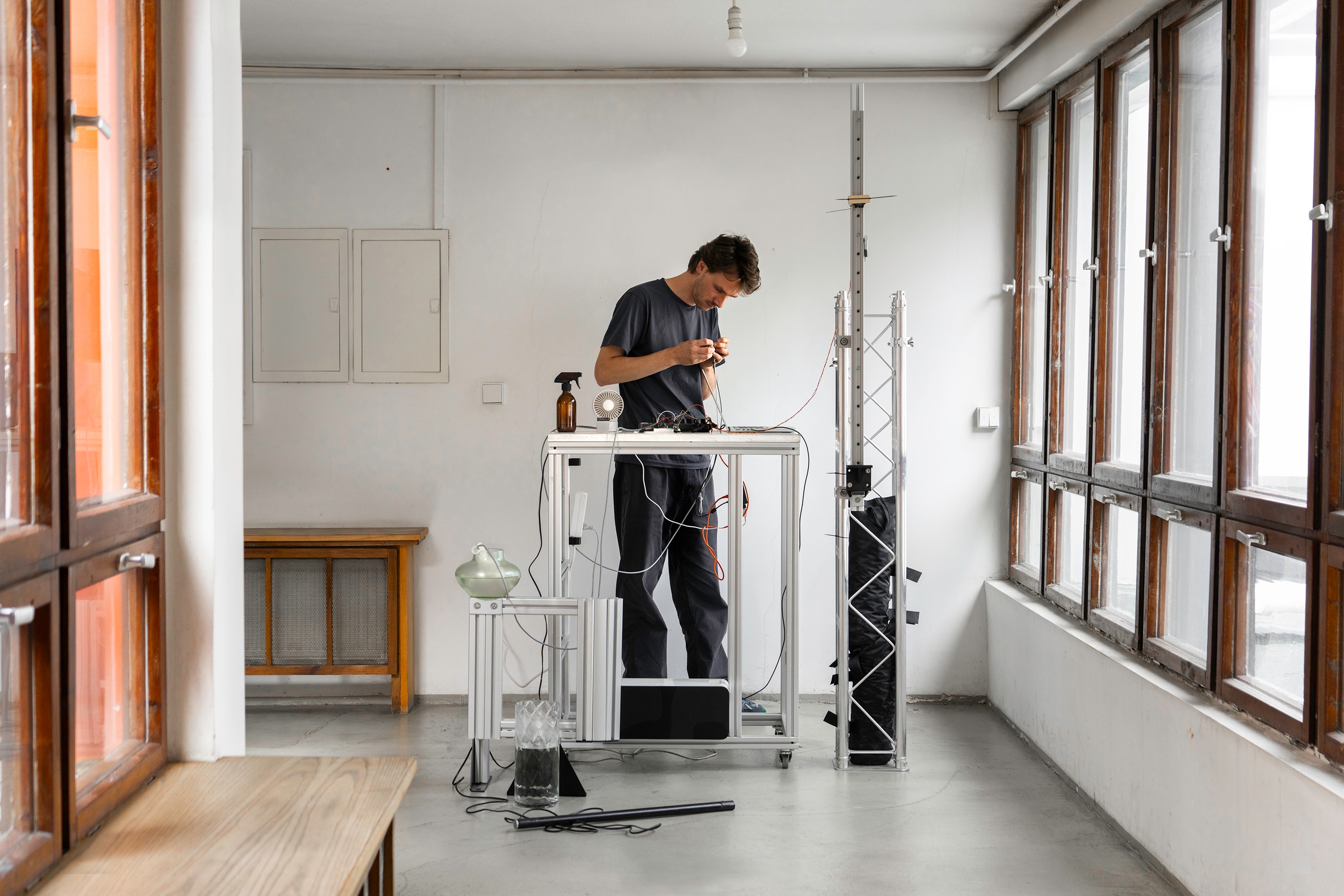
Aurélien + Moritz
Conducting properties
For Moritz and Aurelién, it was always going to be about music. Together they built a small prototype, using sensors to turn human input into digital sound manipulation—an organic, more serendipitous alternative to mouse and keyboard. Set up within our studio’s sunny front room, the sprawling sensor-scape allowed people to interact physically with properties like temperature, distance, force, smell, light, and water to shape a musical piece. Each sensor had its own defined behavior: force gave short impulses, temperature responded to slower changes, while the distance sensor acted as an over-dimensioned, human-scale slider that even allowed the translation of dance into data.
Software Max for Live Connection Kit Ableton Live 12 Python aiosc Open Sound Control
Hardware Teensy 3.2 Macbook Pro 2x Analog Sensors: Temperature, Force, Light, Distance, Electrical Nose Speaker, Sound Output
Watch the experiment
00:00
00:00
Process
Impressions and behind the scenes.
